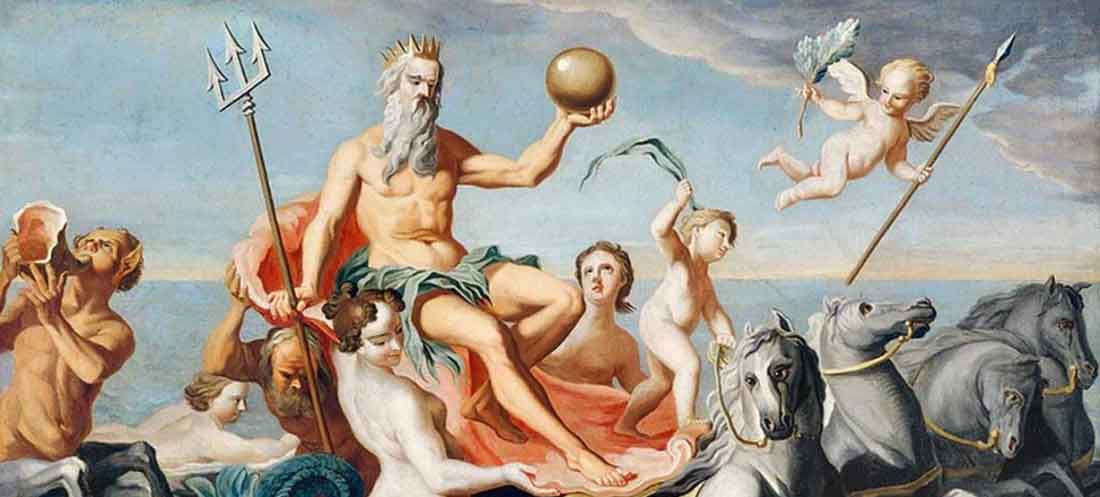Cecrops the first king of Athens

The daughters of Cecrops had a bad end, which came from the following story: Athena gave them to keep a box, in which she had hidden little Erichthonius with the strict order not to open it. But they were burning with curiosity to find out what the box was hiding and in violation of the goddess’s order, they opened it. At the same time he struck all three madmen and without knowing what they were doing they started running, until they fell from the walls of the Acropolis and were killed.
After becoming king over the Acropolis, Cecrops began to take various measures to better organize the life of his city. First, as we said, he built the walls on the rock. Later he had to better organize the country’s defense, when enemies threatened Attica. The Kares arrived from the sea and the Boeotians appeared from the land, who were then called Aonas. The danger was great and forces had to gather for the resistance. That is why Cecrops thought of gathering the inhabitants who until then lived scorpions and making them stay in villages which he later organized in a single city.
Thus, united with the inhabitants of Attica, Cecrops was able to successfully face the invaders. It is even said that then Cecrops made the first census of the population – that is, each resident had to bring a stone and throw it in a certain place. So he was able to count them and they say that from this fact they were called people, while at first it was an indefinite number.
Cecrops was the first to make the laws in Athens. He put people in order by pointing out their dual origins and imposing monogamy. While at first the love affair was free as in animals, with the result that the children did not know their father, except their mother and their origin from her, from now on, with the monogamy established by Cecrops, the children began to refer to their paternal origin. From Cecrops also begins the custom of burying the dead. Still, according to an old tradition, he was the first to bring the alphabet to Athens. Other things he did were to establish the worship of Saturn and Rhea, build a sanctuary for Zeus the Great, whom he named, and erected a statue of Mercury from olive trees on the Erechtheum. For the sacrifices he defined that they should not slaughter and burn living creatures on the altars, as others did, but offer something special sweets, made for this purpose from honey, flour and salt, which were called “pelanos”.
The reign of Cecrops is also connected with the incident from which Athens took its name. At that time the gods thought that they should take the cities of Greece under their protection, so that people could build temples for them and offer them sacrifices. So they began to divide the cities among themselves, but fatally, when two gods wanted the same city, they ended up quarreling with each other.
As for Argos, a dispute broke out between Hera and Poseidon, the same happened for the city of Cecrops between Athena and Poseidon, to win the city they started a fight between them, who will give the most useful gift to the city. They then climbed the rock of the Acropolis, where the other ten gods from Olympus came to judge the dispute between the two gods, while Cecrops was present as a witness. Still others – but later – said that Cecrops himself was a judge.
So when everyone arrived at the Acropolis, the fight between the two gods began. Poseidon came first, he stood in the middle of the rock with the trident gave a strong blow to the ground. Immediately a wave of salt water erupted that formed a small lake called “Erechtheida Sea”. Then it was Athena’s turn to present her gift and after calling Kekropas as a witness, she planted an olive tree on the rock, which flew out full of fruit. This tree was saved for many years later and was shown in Pandrosio. After Athena’s gift, Zeus declared the end of the struggle and told the other gods to judge which of the two gods the city would be given.
At the same time, they sought the testimony and opinion of Cecrops . He looked up from the rock, but wherever he turned, his eyes met salty water, the seas that enveloped the country from everywhere. So the gift of Poseidon was nothing new, nor particularly useful. But the tree that Athena had sprouted was the first to grow throughout the country and was at the same time for the city the promise of glory and happiness. That is why Cecrops considered that Athena’s gift was more useful and thus she was given the dominion of the city. Since then the city got its name and is called Athens.
